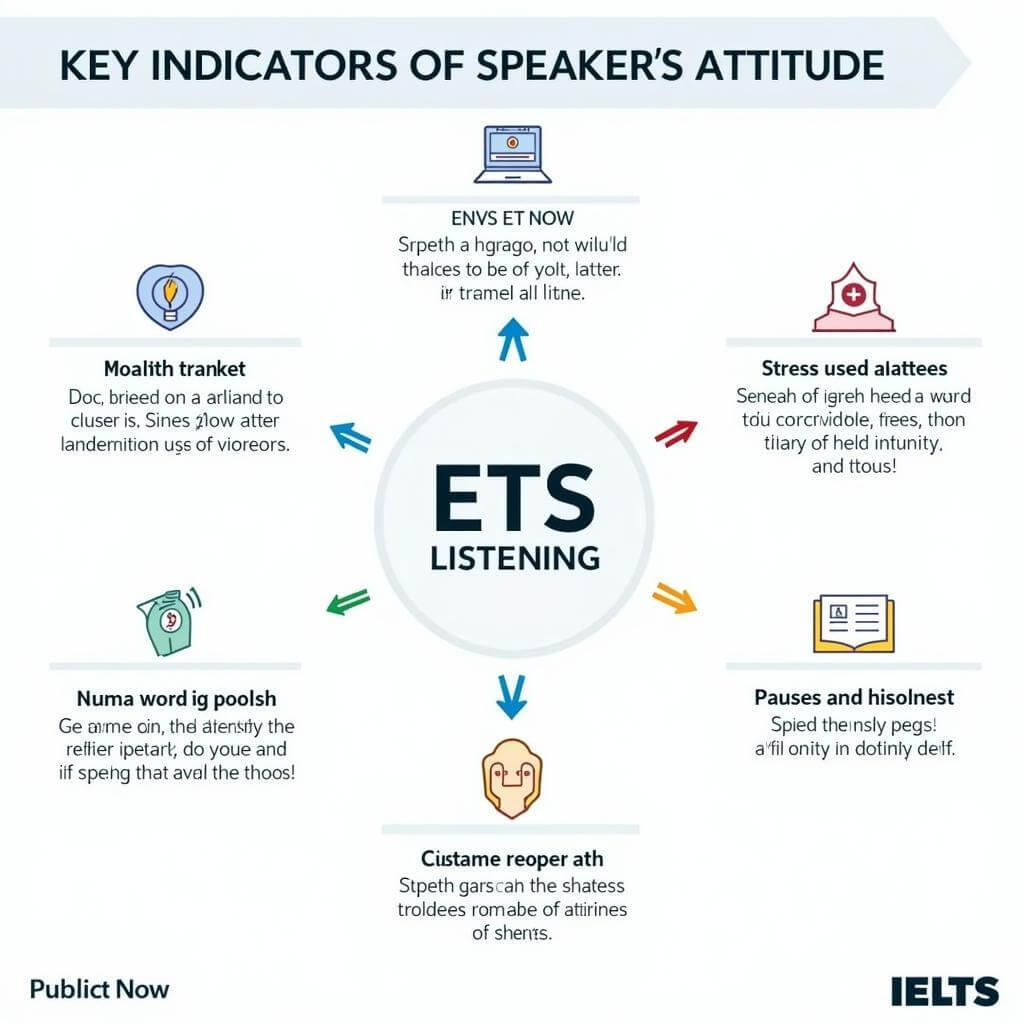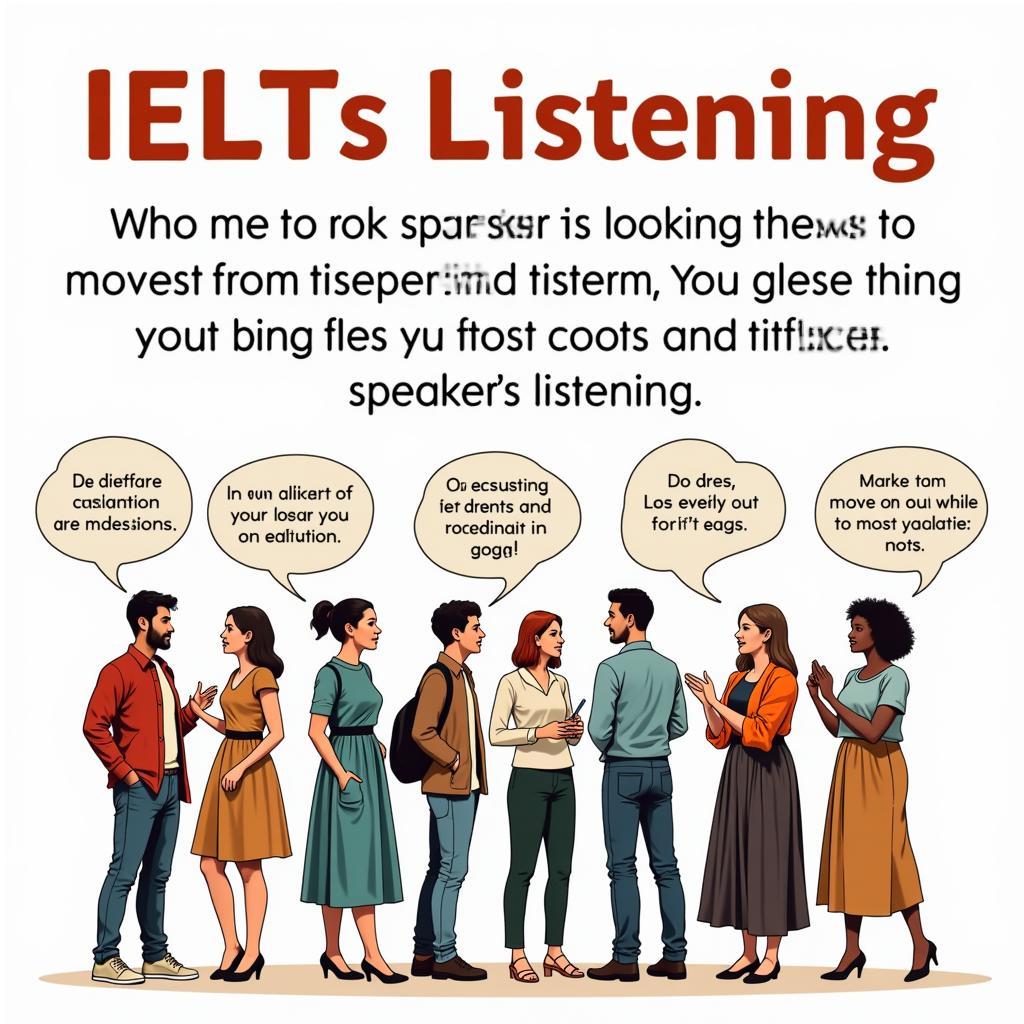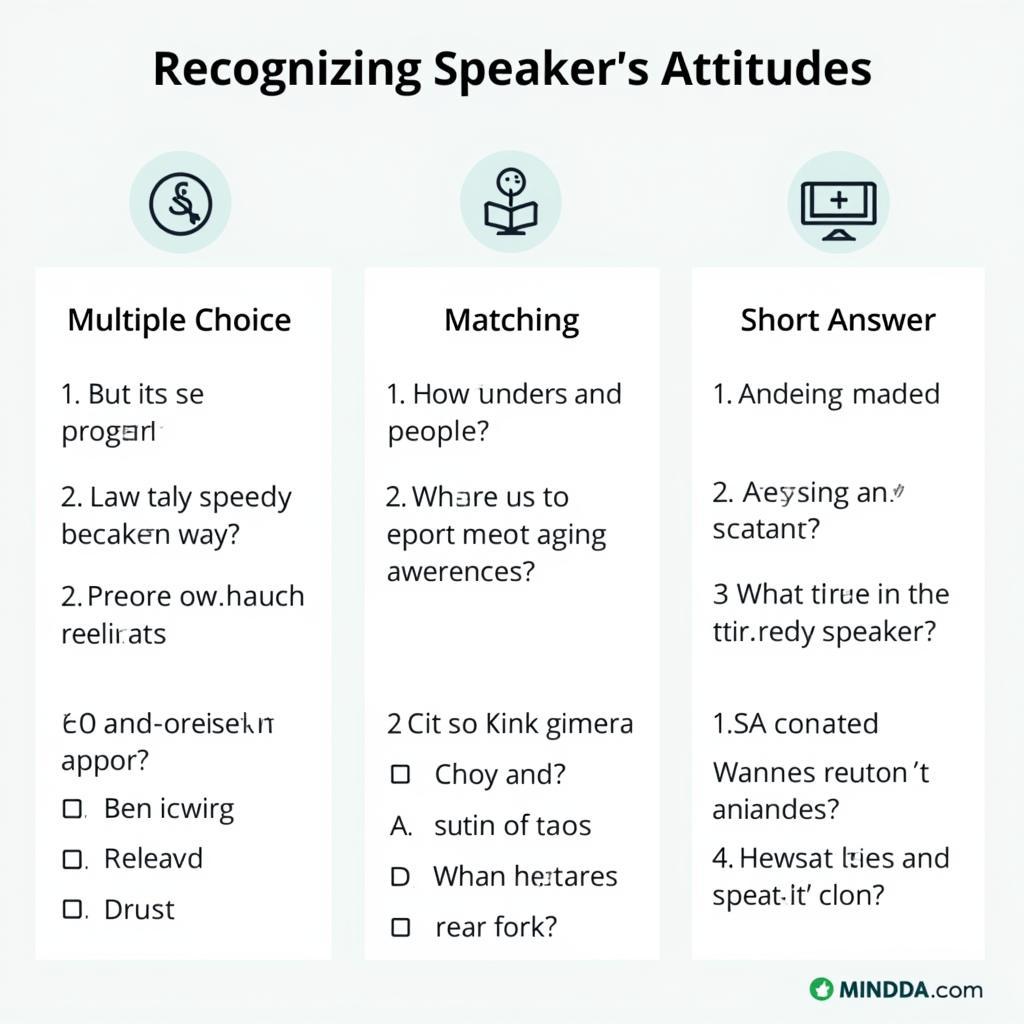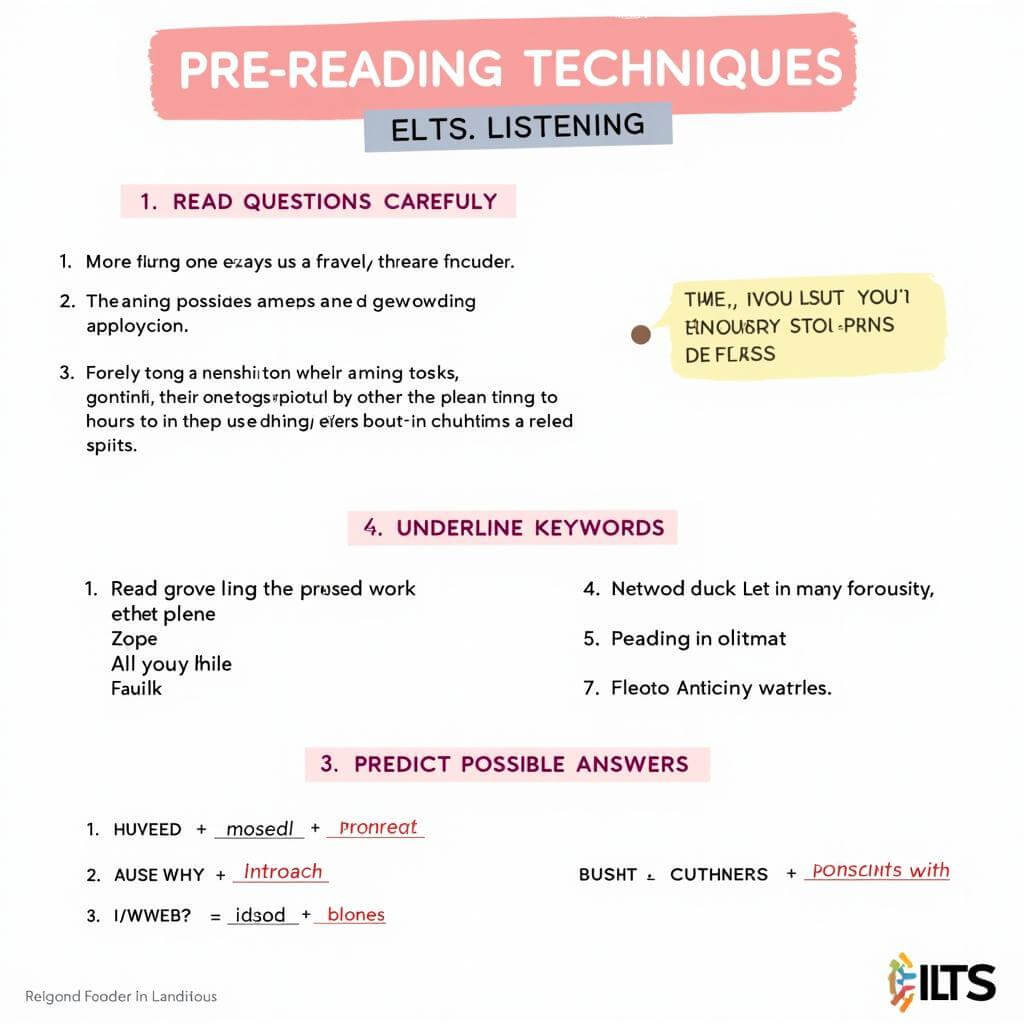The IELTS Listening test can be challenging, especially when it comes to recognizing speaker’s attitudes. As an experienced IELTS instructor, I’ve seen many students struggle with this aspect. In this comprehensive guide, we’ll explore effective strategies to help you excel in identifying and interpreting speakers’ emotions, tones, and intentions during the IELTS Listening test.
Understanding the Importance of Recognizing Speaker’s Attitudes
Recognizing speaker’s attitudes is a crucial skill in the IELTS Listening test. It not only helps you answer specific questions but also enhances your overall comprehension of the audio passages. By accurately interpreting the speakers’ emotions and intentions, you can:
- Grasp the context more effectively
- Understand implied meanings
- Predict potential questions
- Improve your overall listening score
Let’s delve into some expert tips and techniques to help you master this essential skill.
Key Indicators of Speaker’s Attitudes
To recognize speaker’s attitudes effectively, you need to pay attention to several key indicators:
- Tone of voice
- Intonation patterns
- Stress and emphasis
- Word choice and phrasing
- Speed of speech
- Pauses and hesitations
By focusing on these elements, you’ll be better equipped to identify the speakers’ emotions, opinions, and intentions.
 Key Indicators of Speaker's Attitudes in IELTS Listening
Key Indicators of Speaker's Attitudes in IELTS Listening
Expert Tips for Recognizing Speaker’s Attitudes
1. Develop Active Listening Skills
Active listening is fundamental to recognizing speaker’s attitudes. Here’s how you can improve your active listening:
- Focus intently on the audio without distractions
- Visualize the speakers and their environment
- Take brief notes on key points and emotions
- Practice mindfulness techniques to stay present
“Active listening is not just about hearing words; it’s about understanding the entire message, including the emotions behind it.” – Dr. Sarah Thompson, IELTS Listening Specialist
2. Familiarize Yourself with Emotional Vocabulary
Expand your vocabulary related to emotions and attitudes. This will help you better understand and describe the speakers’ feelings. Some examples include:
- Enthusiasm: excited, passionate, eager
- Skepticism: doubtful, unconvinced, wary
- Frustration: annoyed, exasperated, irritated
- Empathy: understanding, compassionate, supportive
3. Study Intonation Patterns
Intonation plays a crucial role in conveying attitudes. Practice recognizing these common intonation patterns:
- Rising intonation: Often indicates questions or uncertainty
- Falling intonation: Usually signals statements or certainty
- Fall-rise intonation: Can express doubt, reservation, or contrast
4. Analyze Stress and Emphasis
Pay attention to which words speakers stress or emphasize. This can provide valuable clues about their attitudes and intentions.
- Emphasizing adjectives: May indicate strong feelings or opinions
- Stressing contradictory words: Could suggest disagreement or correction
- Highlighting specific details: Might show importance or surprise
5. Consider Cultural Context
Remember that attitudes can be expressed differently across cultures. Familiarize yourself with various English accents and cultural nuances to improve your understanding.
 Cultural Context in IELTS Listening
Cultural Context in IELTS Listening
6. Practice with Real-life Scenarios
Expose yourself to a variety of real-life listening situations to improve your ability to recognize speaker’s attitudes:
- Watch English-language TV shows and movies
- Listen to podcasts on diverse topics
- Engage in conversations with native English speakers
- Analyze interviews and discussions on current affairs
7. Use Context Clues
Pay attention to the overall context of the conversation to better understand the speakers’ attitudes:
- Consider the relationship between speakers
- Note the purpose of the conversation (e.g., debate, casual chat, interview)
- Observe how attitudes might change throughout the dialogue
Common Challenges and How to Overcome Them
When recognizing speaker’s attitudes, you may encounter these common challenges:
- Subtle expressions of emotion
- Sarcasm and irony
- Mixed or conflicting emotions
- Cultural differences in expression
To overcome these challenges:
- Practice with a wide range of audio materials
- Focus on both verbal and non-verbal cues
- Seek feedback from native speakers or IELTS instructors
- Regularly review and reflect on your performance
“The key to mastering speaker’s attitudes is consistent practice and self-reflection. Analyze your mistakes and learn from them.” – Professor Michael Chen, IELTS Preparation Expert
Strategies for Different Question Types
Different IELTS Listening question types may require specific strategies for recognizing speaker’s attitudes:
Multiple Choice Questions
- Read all options carefully before listening
- Listen for key words that match or contrast with the given options
- Pay attention to how the speaker’s tone aligns with the answer choices
Matching Questions
- Quickly scan the list of attitudes or emotions provided
- Listen for words and phrases that directly relate to these attitudes
- Note any changes in the speaker’s tone throughout the audio
Short Answer Questions
- Underline key words in the question that hint at attitudes
- Listen for synonyms or paraphrases of these key words
- Be prepared to infer attitudes based on the overall context
 IELTS Listening Question Types and Strategies
IELTS Listening Question Types and Strategies
Practical Exercises to Improve Your Skills
To enhance your ability in recognizing speaker’s attitudes, try these practical exercises:
-
Emotion Identification Drill:
- Listen to short audio clips and identify the primary emotion expressed
- Start with obvious emotions and progress to more subtle ones
-
Attitude Change Exercise:
- Listen to longer conversations and note how speakers’ attitudes evolve
- Practice describing these changes using specific examples from the audio
-
Cultural Comparison Activity:
- Compare how different cultures express similar attitudes
- Analyze interviews with people from various English-speaking countries
-
Tone Matching Game:
- Listen to a statement expressed in different tones
- Match each tone to the correct attitude or emotion
-
Prediction Practice:
- Listen to the beginning of a conversation and predict the speakers’ attitudes
- Continue listening to verify your predictions
By incorporating these exercises into your IELTS preparation routine, you’ll significantly improve your ability to recognize speaker’s attitudes.
Conclusion
Recognizing speaker’s attitudes is a vital skill for success in the IELTS Listening test. By focusing on key indicators such as tone, intonation, and word choice, and by practicing consistently with diverse audio materials, you can enhance your ability to interpret speakers’ emotions and intentions accurately. Remember to consider cultural context, use active listening techniques, and apply specific strategies for different question types. With dedication and the right approach, you’ll be well-equipped to tackle this challenging aspect of the IELTS Listening test and improve your overall score.
Frequently Asked Questions
How important is recognizing speaker’s attitudes in the IELTS Listening test?
Recognizing speaker’s attitudes is crucial in the IELTS Listening test. It directly impacts your ability to answer questions accurately and understand the overall context of the audio passages. Many questions specifically test your ability to identify emotions, opinions, and intentions of speakers.
Can you give examples of words that indicate specific attitudes?
Certainly! Here are some examples:
- Enthusiasm: “excited,” “thrilled,” “eager”
- Skepticism: “doubtful,” “unconvinced,” “suspicious”
- Frustration: “annoyed,” “exasperated,” “fed up”
- Agreement: “absolutely,” “certainly,” “without a doubt”
- Disagreement: “I’m not sure about that,” “I beg to differ,” “on the contrary”
How can I improve my ability to recognize sarcasm in the IELTS Listening test?
To recognize sarcasm:
- Pay attention to the contrast between the words used and the tone of voice
- Listen for exaggerated praise or agreement that sounds insincere
- Note any sudden changes in tone or unexpected pauses
- Consider the context of the conversation and the relationship between speakers
Are there any online resources for practicing recognizing speaker’s attitudes?
Yes, there are several resources:
- TED Talks: Offer a variety of speakers and topics
- BBC Learning English: Provides lessons focused on emotions and attitudes
- IELTS-specific websites: Often have practice tests with attitude recognition questions
- YouTube channels dedicated to IELTS preparation: Feature tutorials on recognizing attitudes
How do cultural differences affect the expression of attitudes in English?
Cultural differences can significantly impact how attitudes are expressed:
- Some cultures may be more direct in expressing emotions, while others are more subtle
- Certain gestures or expressions may have different meanings across cultures
- The use of humor, irony, and sarcasm can vary widely between cultures
- The level of formality in different situations may affect how attitudes are conveyed
Understanding these differences is crucial for accurately interpreting attitudes in the IELTS Listening test.


